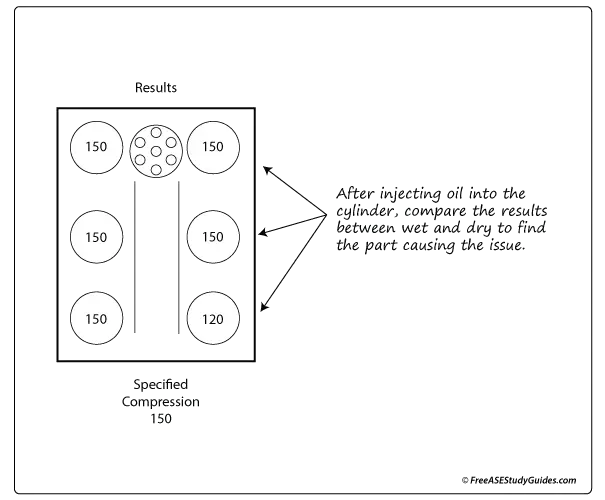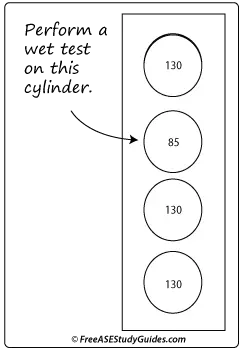Cylinder Compression Testing

Perform a wet compression test if a cylinder's pressure is below specifications. This test indicates whether the valves, head gasket, or the piston rings are at fault. Inject a small amount of oil, usually about a tablespoon, into the cylinder and rotate the crankshaft about six turns of so.

If the compression gauge indicates an increase after adding the oil, the piston rings are worn. If the readings change little or stay the same, a valve or valve seat is faulty. If there are low pressure readings between adjacent cylinders, suspect a faulty head gasket.

Typical wet compression test:
1. Warm the engine to operating temperature and then let it sit for 10 or 15 minutes.
2. Remove all spark plugs and open the throttle. Keep the plugs in order by the cylinder.
3. Disable ignition and fuel.
4. Test each cylinder and record dry results before adding oil.
5. Add 1-2 tablespoons of oil to the suspect cylinder, rotate the crankshaft 6 times, and record the readings.
6. If the reading increased, the engine needs piston rings, if not, suspect the cylinder's intake and exhaust valves.